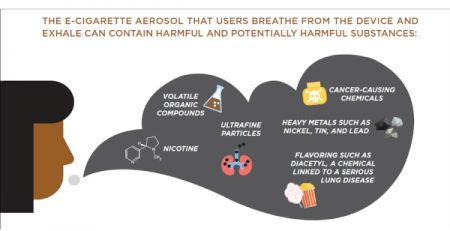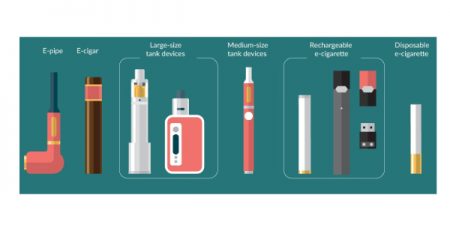Youth Exposure and Response to the FDA Health Warning Label
Asfar T, et al. Youth Exposure and Response to the FDA Health Warning Label on Electronic Cigarettes Packaging: Policy Implications. Nicotine & Tobacco Research, Volume 26, Issue 2, February 2024, Pages 151-160. https://doi.org/10.1093/ntr/ntad175
https://academic.oup.com/ntr/article-abstract/26/2/151/7265416?redirectedFrom=fulltext
“We pooled data from the 2018–2021 National Youth Tobacco Survey (age 10–17; n = 67 159). Youth exposure was positively associated with a higher perception of e-cigarette addictiveness (1.12 [1.04 to 1.19]) and intention to quit all tobacco products (1.28 [1.13 to 1.46]). However, exposure was negatively associated with harm perception (0.91 [0.85 to 0.96]) and the intention to use e-cigarettes among e-cigarette nonusers (2.38 [1.99 to 2.84]).”
“The FDA e-cigarette label reached only 24.5% of youth, and exposure to the warning declined to indicate wear-out effects…. Strengthening the label by using more compelling designs, including diverse themes focusing on e-cigarette harm relevant to youth, and periodically rotating warning content may improve its impact on youth. Continued surveillance of the implementation of e-cigarette policies is needed to ensure that they equally affect youth across racial/ethnic subpopulations.”
Comment on these findings: What lesson can be learned for Thailand, where e-cigarettes are banned?
1. Only 1 in 4 US youth saw warning labels on electronic cigarettes. This may be due to the lack of warning label coverage or because youth do not acknowledge the warning, having already committed to try e-cigarettes or are with those who use (peers, siblings, or others). Acknowledging harm after a behavior is adopted may not occur as compared to before a behavior, and warnings that aren’t salient to youth concerns (adult-focused) may have limited effects.
2. Warnings that are preventive communications are better than warnings that come after the adoption of the use of an addictive product. Preventive communications to youth should be focused on youth concerns and be provided through communication platforms that youth use for information (like digital platforms that are preferred by youth). Stephen Hamann












